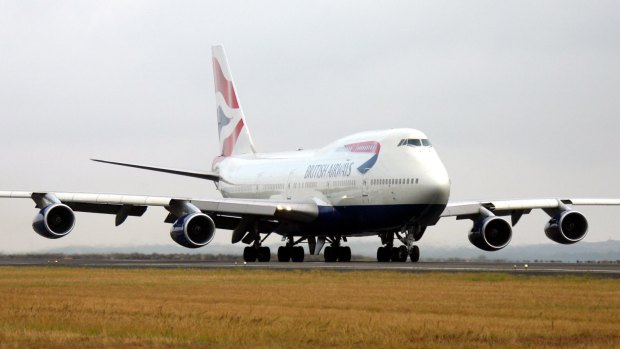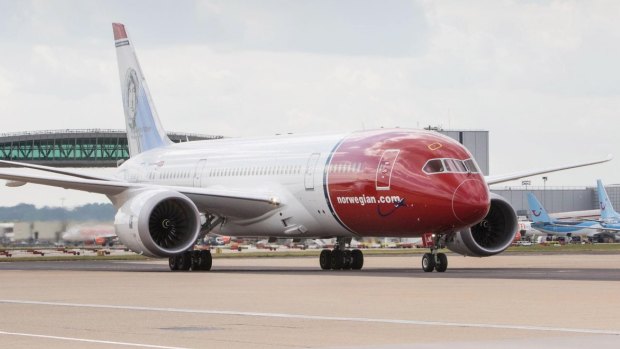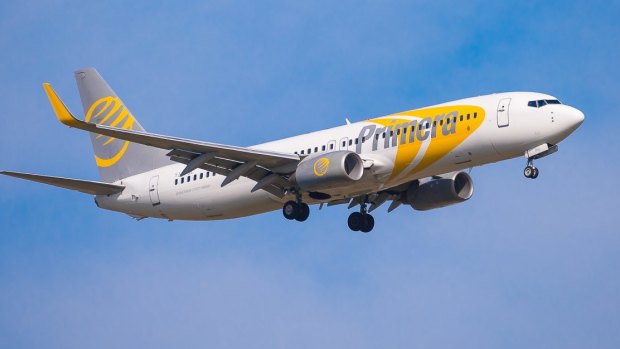This was published 5 years ago
Trans-Atlantic flight route: Most popular aircraft and airlines, including the Boeing 747
By Oliver Smith

British Airways still flies Boeing 747 jumbo jets across the Atlantic to America.Credit: Jim Rice
There have been many reports about the slow death of the 747 - Qantas is phasing out its jumbo jets and no American airline is still flying a passenger version of the the largest Boeing.
However, OAG's statistics suggest the jumbo jet - a mainstay of trans-Atlantic travel for 50 years - will be gracing our skies for a few years to come.
A total of 4667 trans-Atlantic flights will use the model this winter, up from 4534 last year. That's almost three times as many the record-breaking A380 "superjumbo", which was launched to much fanfare in 2007 but has failed to back up its big size with big sales.
Both aircraft, however, were criticised last month in a report by the International Council on Clean Transportation, which said that the use of larger aircraft across the Atlantic led to British Airways being ranked bottom of 20 major airlines for fuel efficiency.
Boeing rolled out the first 747 on September 30, 1968, with the first commercial flight on January 21, 1970, going from New York to London on Pan American World Airways.
The giant aircraft ushered in a new era of long-haul travel, flying further and faster than most of its predecessors. It also brought new levels of luxury to the sky, with premium passengers enjoying a bar and lounge on the upper deck with some carriers.
Qantas will retire the last of its six 747-400s by the end of 2020 as it increases its fleet of 787 Dreamliners to 14 the same year.
The jumbo jet has been in the Qantas fleet in various forms since 1971. The hump-backed jet was the largest commercial aircraft to fly until the launch of thirbus A380 in October 2007.
The most popular models for services between Europe and North America are the Airbus A330 (used by the likes of Turkish Airlines, Delta, American and Lufthansa) and the Boeing 777 (preferred by BA, which owns 58). The 787 Dreamliner, favoured by Norwegian, comes in at number three.
The 10 most popular aircraft for trans-Atlantic flights
(Number of flights 2018 flights in the northern winter)
- Airbus A330 13,807
- Boeing 777 13,420
- Boeing 787 9,781
- Boeing 767 9,664
- Boeing 747 4,667
- Boeing 757 2,605
- Airbus A340 2,210
- Airbus A380 1,646
- Airbus A318/319/320/321 1,479
- Boeing 737 1,297
See also: Not dead yet: The Boeing 747 will survive, but not as you know it
The rise of Norwegian

What was once a plucky Scandinavian upstart, offering flights from regional outposts like Haugesund, Molde and Kristiansund, has grown to become one of the biggest players in Europe – and beyond. It is now the continent's third largest low-cost airline and new statistics have revealed just how quickly it has gatecrashed the trans-Atlantic party.
Norwegian's first flight to North America - from Oslo to JFK - took off just over five years ago. Today it visits 15 US airports, as well as two in Canada, and - according to data supplied by aviation analyst OAG - it is currently the sixth biggest carrier for trans-Atlantic services, with a capacity of 1.33 million seats for winter 2018/19. That's up from 0.86 million last winter, representing a remarkable year-on-year increase of 54.7 per cent, and up from 0.41 million in 2016/17.
Left in its wake are a clutch of venerable flag carriers, including Air Canada (now seventh, with 1.06 million seats), Air France (eighth with 0.93m) and KLM (10th with 0.64m), while it is closing in on the likes of American, Lufthansa, United, and, of course, British Airways. No wonder IAG, BA's parent company, tried to buy Norwegian earlier this year.
BA remains the top dog for trans-Atlantic flights, offering 1.97 million seats this winter, but that's an increase of just 5.9 per cent. The gap is closing fast.
A handful of other airlines have seen substantial growth this year, including Virgin Atlantic (+19.9 per cent), Iberia (+28.8 per cent), Aer Lingus (+22.4 per cent) and Icelandair (+23.5 per cent).
See also: Airline review: Norwegian offers world's largest premium seat
The low-cost long-haul revolution

Credit: Shutterstock
If its rapid growth is anything to go by, Norwegian appears to have nailed the low-cost long-haul model, and has inspired a raft of imitators. Not all are performing so well, however.
Primera Air, founded in Iceland, headquartered in Latvia, and with a Danish operating license, recently ceased trading having offered services from London's Stansted to Toronto, Boston and New York.
WOW Air, based in Iceland, has been flying to the US since 2015. But this week it announced the cancellation of services to Cincinnati, Cleveland and St. Louis just months after their launch. OAG's data shows that WOW's trans-Atlantic winter capacity has increased by a relatively paltry 9.4 per cent.
Another carrier entering the fray is Eurowings. This year it kicked off services from Germany to Miami, New York and Fort Myers (Florida), and its winter schedule includes just over 100,000 trans-Atlantic seats, up from 20,000 last year.
The Telegraph, London, with Traveller.com.au
See also: A380 superjumbo destined for scrapyard gets new lease on life
Sign up for the Traveller Deals newsletter
Get exclusive travel deals delivered straight to your inbox. Sign up now.